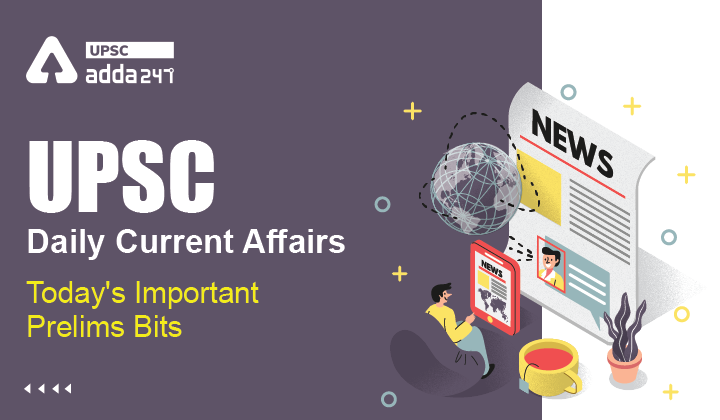Table of Contents
ASHA programme
In News
India’s one million Accredited Social Health Activists (ASHA) volunteers have received arguably the biggest international recognition in form of the World Health Organization’s Global Health Leaders Awards 2022.
WHOs Recognition
- The ASHAs were among the six awardees announced at the 75th World Health Assembly in Geneva.
- This World Health Organization (WHO) award is in recognition of the work done by ASHA volunteers during the COVID-19 pandemic as well as for serving as a link between communities and health systems.
- Even before the COVID-19 pandemic, ASHAs have made extraordinary contributions towards enabling increased access to primary health-care services; i.e. maternal and child health including immunisation and treatment for hypertension, diabetes and tuberculosis, etc., for both rural and urban populations, with special focus on difficult-to-reach habitations.
- Over the years, ASHAs have played an outstanding role in making India polio free, increasing routine immunisation coverage; reducing maternal mortality; improving new-born survival and in greater access to treatment for common illnesses.
About ASHA programme
- India launched the ASHA programme in 2005-06 as part of the National Rural Health Mission.
- Initially rolled out in rural areas, with the launch of the National Urban Health Mission in 2013, it was extended to urban settings as well.
- Each of these women-only volunteers work with a population of nearly 1,000 people in rural and 2,000 people in urban areas, with flexibility for local adjustments.
- The core of the ASHA programme has been an intention to build the capacity of community members in taking care of their own health and being partners in health services.
- The ASHA programme was inspired from the learnings from two past initiatives: one from the late 1970s and the other of the early 2000s.
Status of Gun Control Legislation in India
- Gun licence applicants in India must be at least 21 years and not convicted of any offence involving violence, of ‘unsound mind’ or a threat to public safety and peace.
- Upon receiving an application, the licensing authority (i.e., the Home Ministry), asks the officer in-charge of the nearest police station to submit a report about the applicant after thorough vetting.
- The Arms Act amended in 2019 reduces the number of firearms that an individual can procure from three to two.
- Indian laws are particularly elaborate in dealing with sale and unlawful trade of weapons. It also enlists specific provisions on curtailing the use of licensed weapons to ensure social harmony.
- No entity is permitted to sell or transfer any firearm which does not bear the name of the maker, manufacturer’s number or any other visible or stamped identification mark.
- Any act of conversion (such as shortening the barrel of a firearm or converting an imitation firearm into a firearm) or unlawful import-export is punishable with an imprisonment term of seven years, which may extend to life imprisonment and be liable to monetary fines.
Indus Treaty
History of the Indus Water Treaty
- The Indus river basin contains six rivers: the Indus, Jhelum, Chenab, Ravi, Beas, and Sutlej, which originate in Tibet and flow across the Himalayan hills into Pakistan, terminating in Karachi to the south.
- Apart from dividing India and Pakistan geographically, the partition line also split the Indus river system in two in 1947.
- Both sides were reliant on water from the Indus river basin to keep their irrigation system running, therefore a fair distribution was required.
- Initially, the Inter-Dominion Agreement of May 1948 was signed, under which both countries agreed that India would deliver water to Pakistan in exchange for an annual payment from Pakistan.
- This agreement, however, quickly fell apart since the two countries couldn’t agree on how to interpret it.
- In 1951, both countries sought to the World Bank for finance of their respective irrigation projects on the Indus and its tributaries, which is when the World Bank volunteered to mediate the disagreement due to the water-sharing dispute.
- After over a decade of fact-finding, discussion, World Bank recommendations, and changes, the two countries finally came to an agreement in 1960, and the Indus Waters Treaty (IWT) was signed by former Prime Minister Jawaharlal Nehru and then-President of Pakistan, Ayub Khan. W.A.B. Iliff, a former World Bank Vice President, also signed it.
- The two countries meet once a year to discuss cooperation on the Indus River System, as required by Article VIII of the Indus Waters Treaty, which both countries signed in 1960 with the World Bank’s assistance.
- The Commissioners are supposed to convene at least once a year, in India and Pakistan, on alternating years.
Purchasing Managers’ Index
What is a PMI?
- Started in 1948 by the US-based Institute of Supply Management, the Purchasing Managers’ Index, or PMI, has now become one of the most closely watched indicators of business activity across the world.
- PMI or a Purchasing Managers’ Index (PMI) is an indicator of business activity — both in the manufacturing and services sectors.
- It is a survey-based measures that asks the respondents about changes in their perception of some key business variables from the month before.
- It is calculated separately for the manufacturing and services sectors and then a composite index is constructed.
- The index shows trends in both the manufacturing and services sector. The index helps in determining whether the market conditions, as seen by purchasing managers, is expanding, contracting or staying the same. It is used to provide information regarding the current and future business conditions.
-
PMI is one of the closely watched indicators of business activity and helps in predicting the economic health of a country. There are two types of PMI — Manufacturing PMI and Services PMI. A combined index is also made using both manufacturing PMI and services PMI.



 TSPSC Group 1 Question Paper 2024, Downl...
TSPSC Group 1 Question Paper 2024, Downl...
 TSPSC Group 1 Answer key 2024 Out, Downl...
TSPSC Group 1 Answer key 2024 Out, Downl...
 UPSC Prelims 2024 Question Paper, Downlo...
UPSC Prelims 2024 Question Paper, Downlo...





